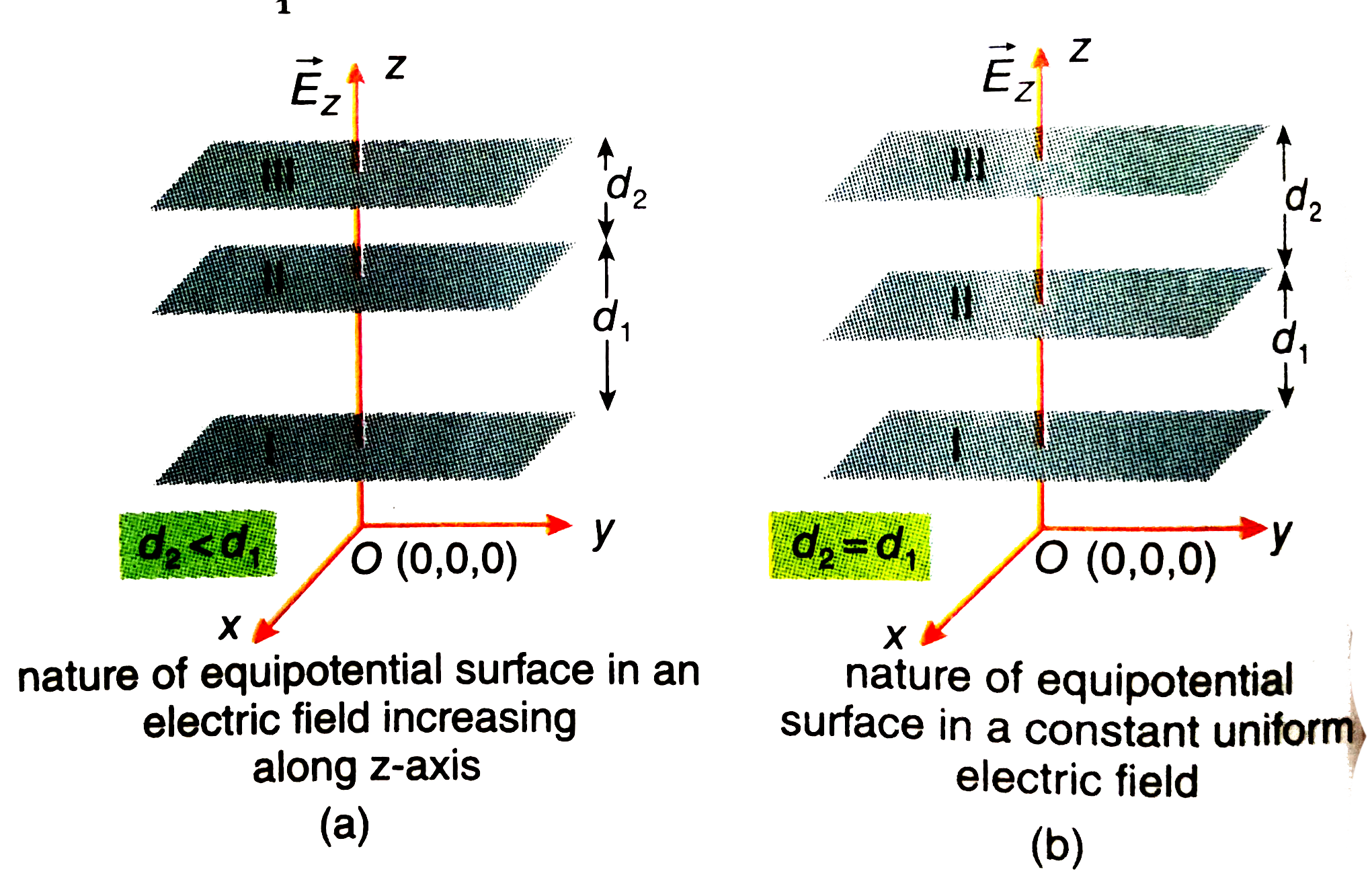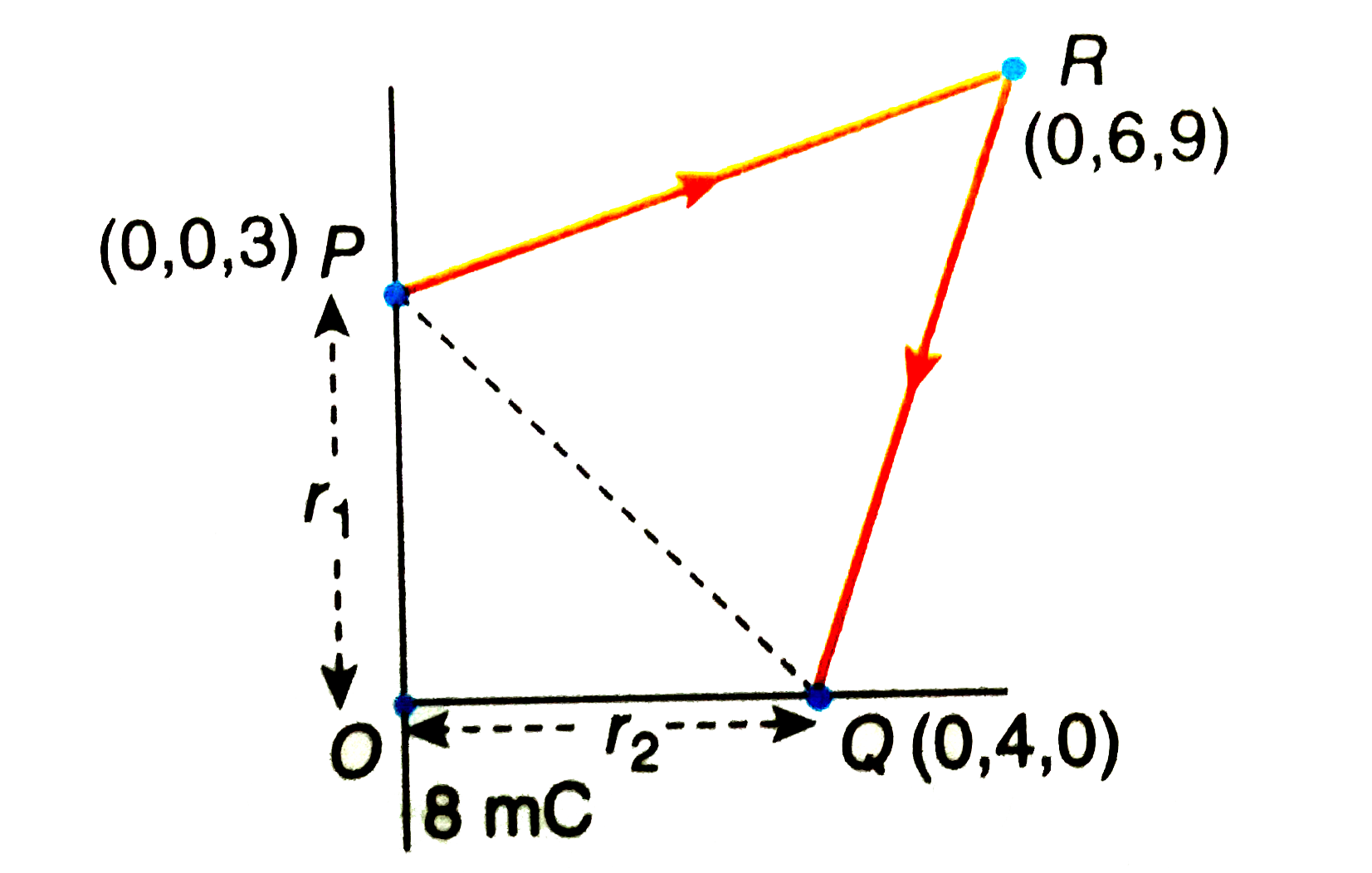Draw three equipotential surfaces corresponding to a field that uniformly increases in magnitude but remains constant along z-direction. How are these surfaces different from that of a constant electric field along z-direction?Solution in Bengali
The separation between the equipotential surfaces will gradually decrease along the direction of increment of the electric field (in cas z - axis).
In case of a constant uniform electric field, the equipotential surfaces are equally spaced.

Topper's Solved these Questions
- BOOK - CHHAYA PUBLICATIONCHAPTER - ELECTRIC POTENTIAL EXERCISE - NCERT textbook questions with answer hint14videos
ELECTRIC POTENTIAL
- BOOK - CHHAYA PUBLICATIONCHAPTER - ELECTRIC POTENTIAL EXERCISE - NCERT examplar questions with answer hint (MCQ -1 single option correct)3videos
ELECTRIC POTENTIAL
- BOOK - CHHAYA PUBLICATIONCHAPTER - ELECTRIC POTENTIAL EXERCISE - Section related questions25videos
ELECTRIC POTENTIAL
- BOOK - CHHAYA PUBLICATIONCHAPTER - ELECTRIC FIELDEXERCISE - CBSE SCANNER31videos
ELECTRIC FIELD
- BOOK - CHHAYA PUBLICATIONCHAPTER - ELECTROMAGNETIC INDUCTION & ALTERNATING CURRENTEXERCISE - CBSE SCANNER28videos
ELECTROMAGNETIC INDUCTION & ALTERNATING CURRENT
Similar Questions
A charge of 8 mC is located at origin. Calculate the work done in taking a small charge of −2×10−9C from a point P(0,0,3cm) to a point Q (0,4cm,0), via a point R (0,6cm, 9cm).
 02:41View Solution
02:41View SolutionA positively charged particle is released from rest in a uniform electric field. The electric potential energy of the charge
View SolutionWhat do you mean by potential of a charged body?
03:26View SolutionA charge q is placed at the centre of a cube of side l. What is the electric flux passing through each face of the cube?
04:26View SolutionA bar magnet is moved in the direction indicated by the arrow between two coils PQ and CD. Predict the directions of induced current in each coil.
 05:25View Solution
05:25View SolutionDraw 3 equipotential surfaces corresponding to a field that uniformly increases in magnitude but remains constant along positive Z-direction. How are these surfaces different from that of a constant electric field along Z-direction ?
04:29View Solutionएक विद्युत क्षेत्र के संगत तीन समविभव पृष्ठ खींचिए। विद्युत क्षेत्र परिमाण में लगातार समान रूप से बढ़ता है किंतु उसकी दिशा Z-दिशा में होती है। ये पृष्ठ Z-अक्ष के अनुदिश नियत विद्युत क्षेत्र के संगत समविभव पृष्ठ से किस प्रकार भिन्न हैं?
04:29View SolutionDescribe schematically the equipotential surfaces corresponding to (a) a constant electric field in the z-direction.
10:00View SolutionDescribe schematically the equipotential surfaces corresponding to (b) A field that uniformly increases in magnitude but remains in a constant (say, z) direction.
04:07View Solutionउस क्षेत्र के तदनुरूप तीन समविभव पृष्ठ खींचिये जिसका परिमाण में एकसमान वृद्धि होती है, परन्तु z - दिशा के अनुदिश नियत रहता है | ये पेष्ट उन पृष्ठों से किस प्रकार भिन्न हैं जो किसी नियत विद्युत क्षेत्र के z - दिशा के अनुदिश हैं ?
View SolutionDescribe schematically the equipotential surfaces corresponding to A field that uniformly increases in magnitude but remains in the same (say Z) direction
View SolutionDescribe schematically the equipotential surfaces corresponding to
A field that uniformly increases in magnitude but remains in the same (say Z) directionView SolutionEstablish the relation between electric field and electric potential at a point. Draw the equipotential surface for an electric field pointing in +Z direction with its magnitude increasing at constant rate along -Z direction
04:15View SolutionDescribe schematically the equipotential surfaces corresponding to
a. a constant electric field in the z-direction.
b. a field that uniformly increases in magnitude but remains in a constant (say,z) direction.
c. a single positive charge at the origin, and
d. a uniform grid consisting of long equally spaced parallel charged wires in a plane.05:55View SolutionDescribe schematically the equipotential surfaces corresponding to
(a) a constant electric field in the z-direction,
(b) a field that uniformly increases in magnitude but remains in a constant (say, z) direction,
(c) a single positive charge at the origin, and
(d) a uniform grid consisting of long equally spaced parallel charged wires in a plane.02:17View Solution

